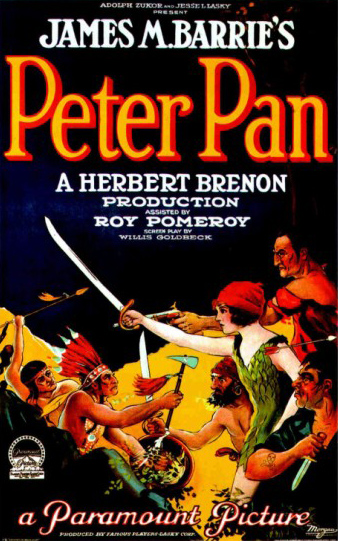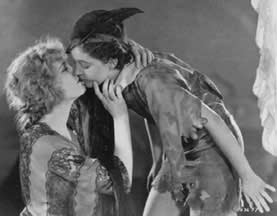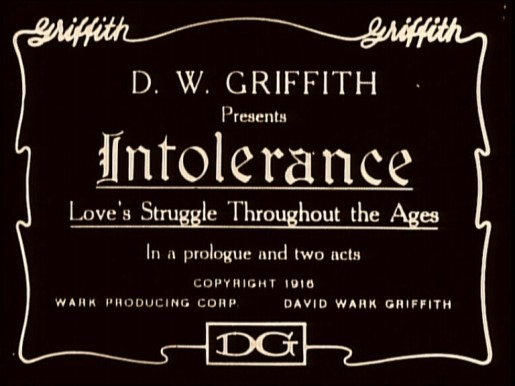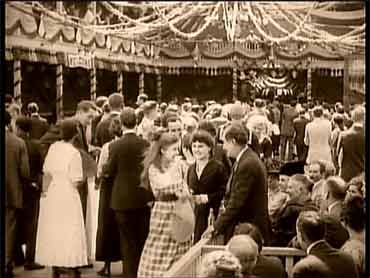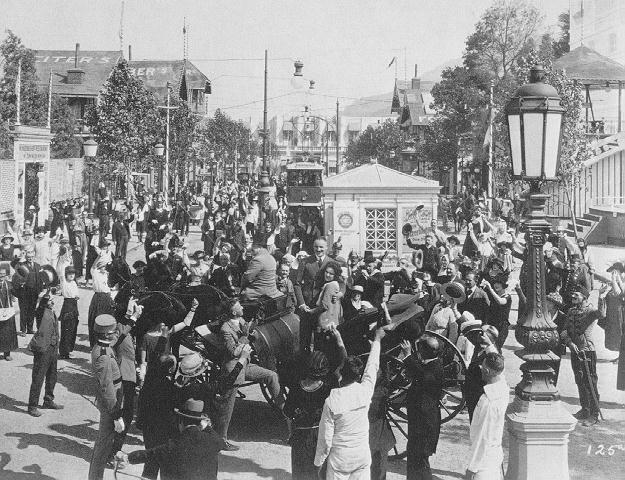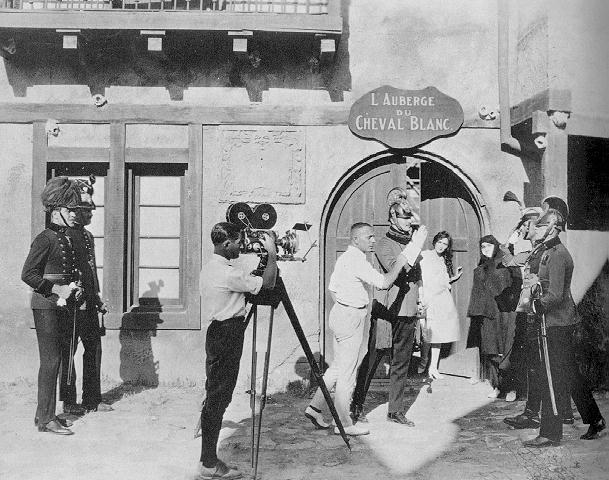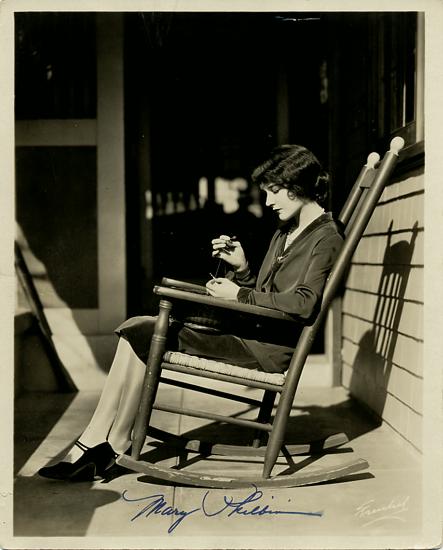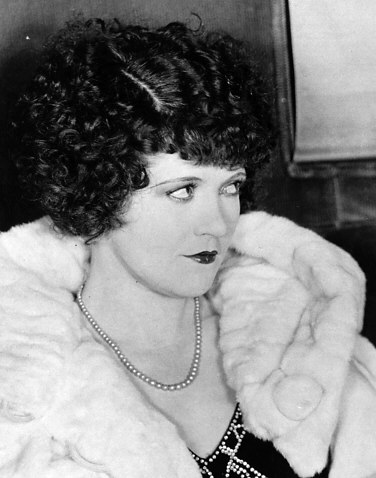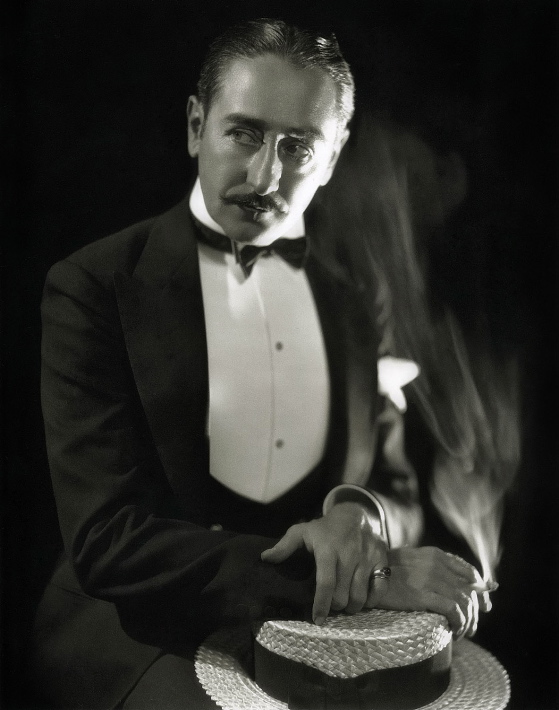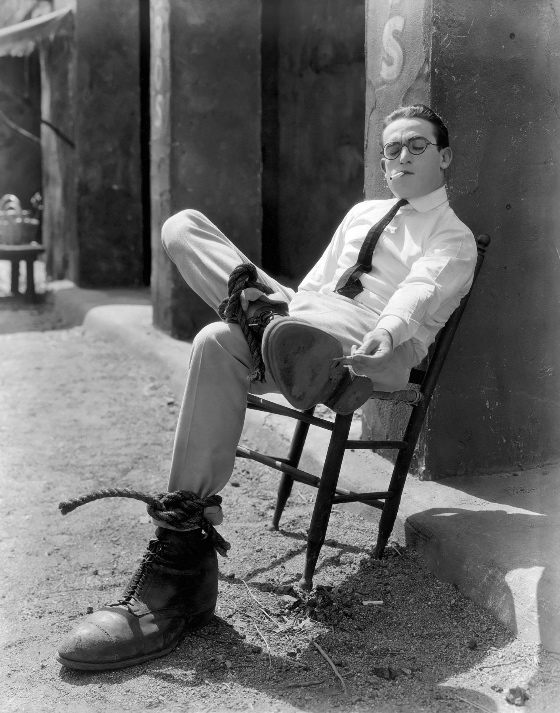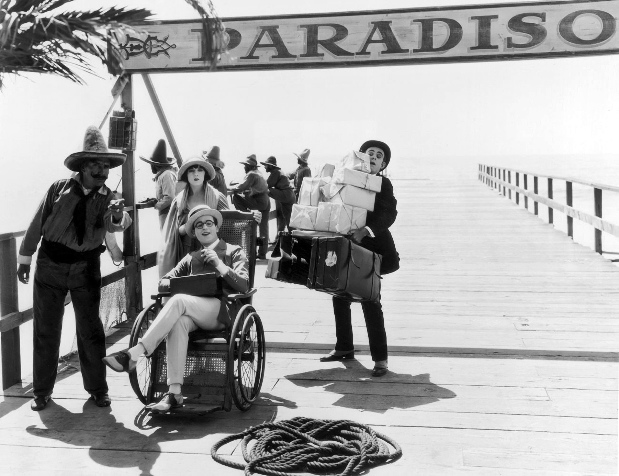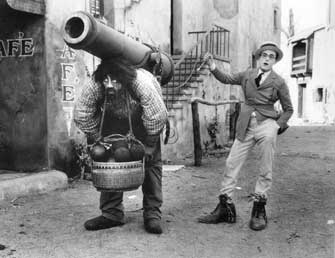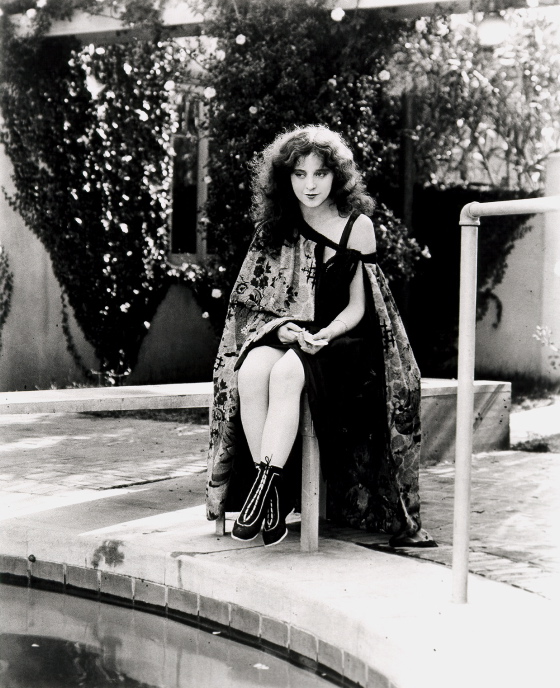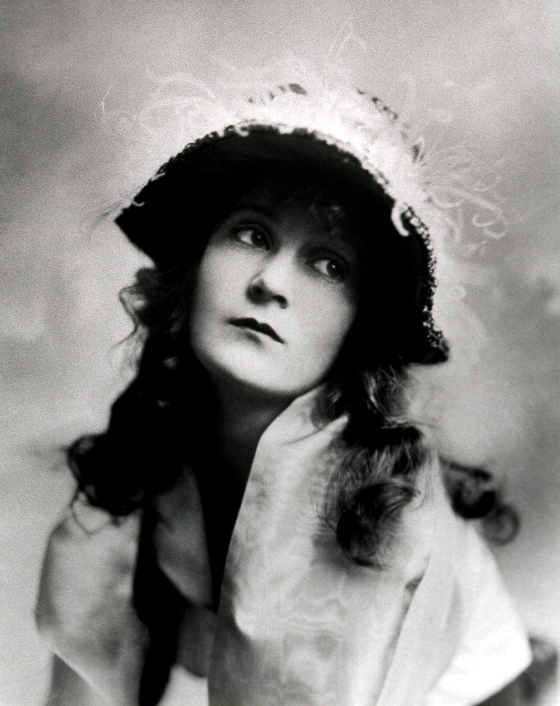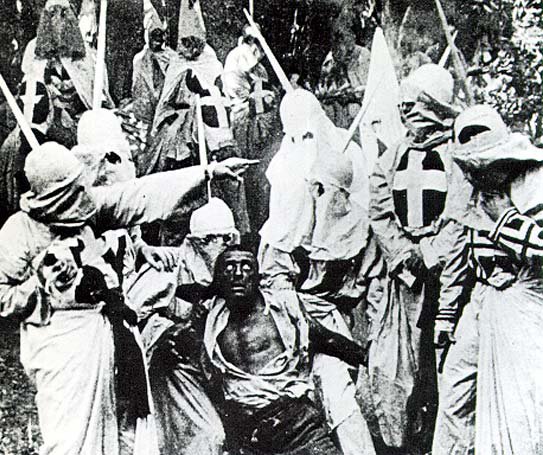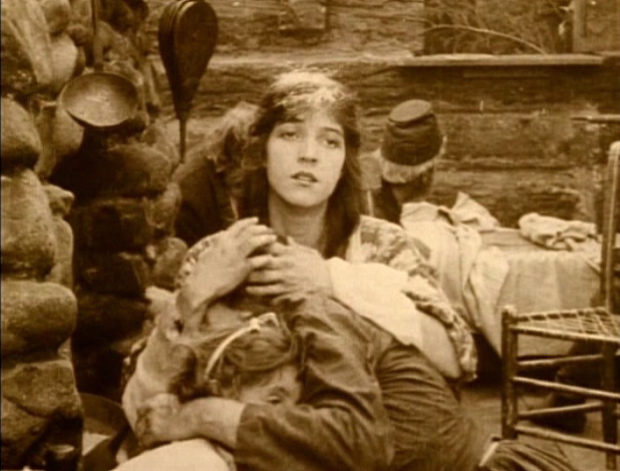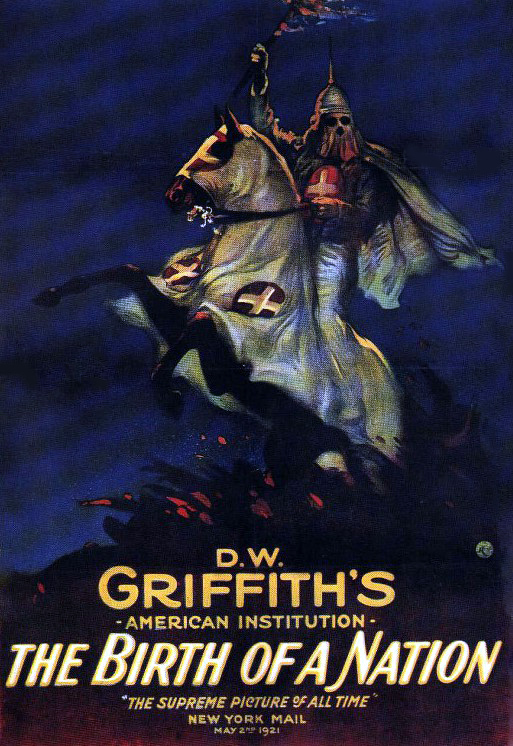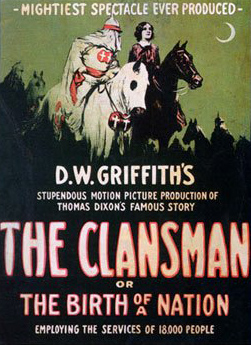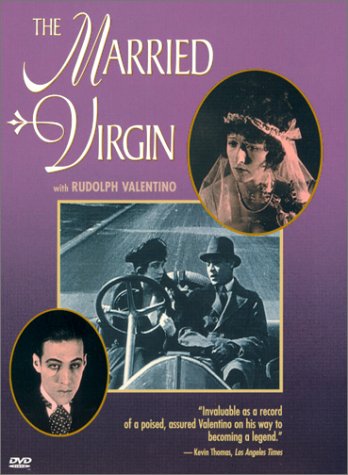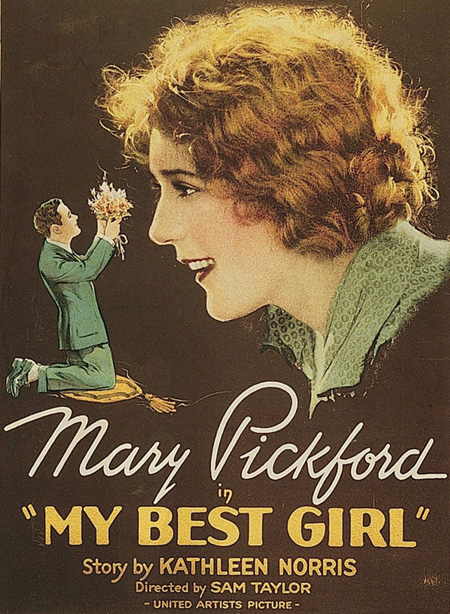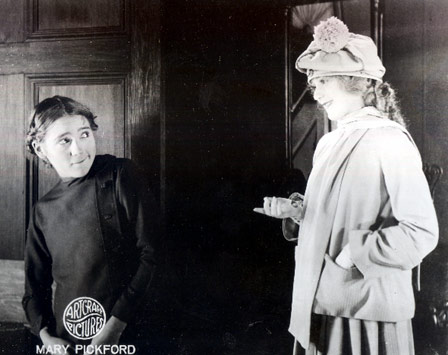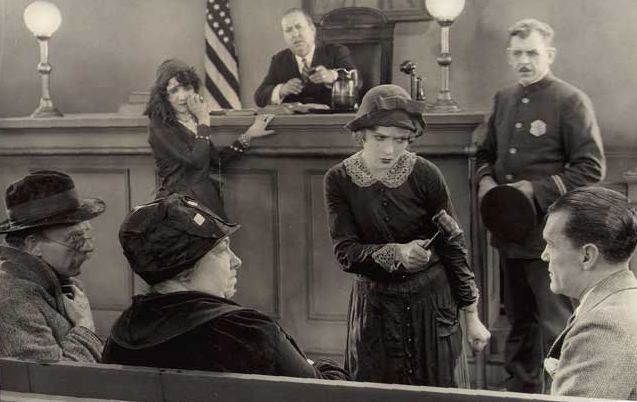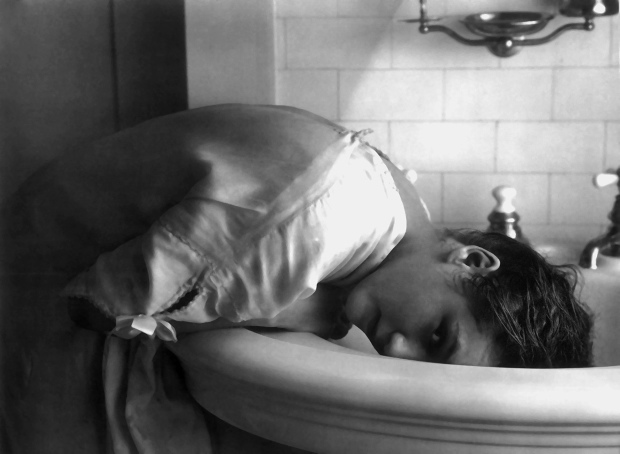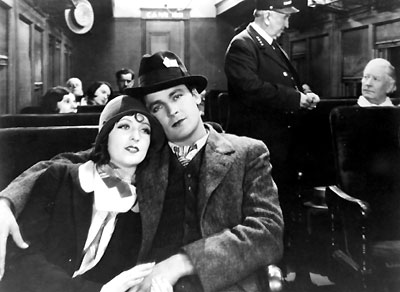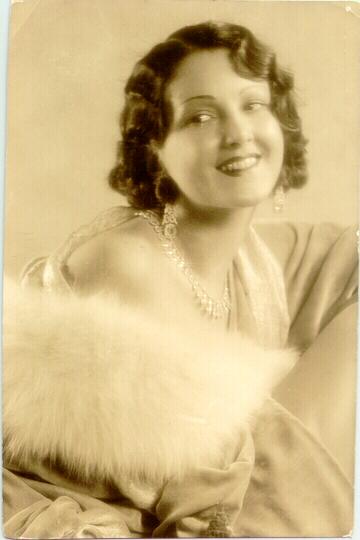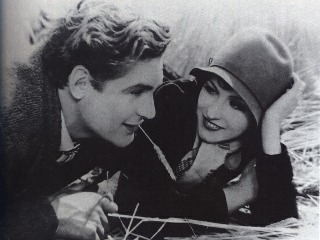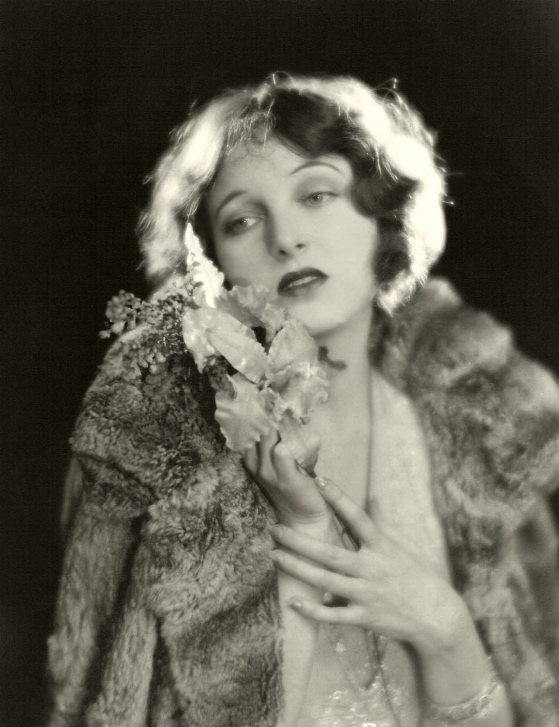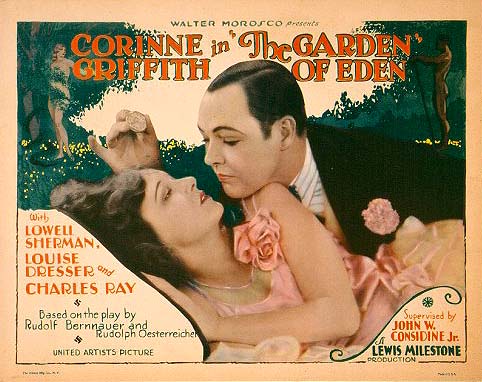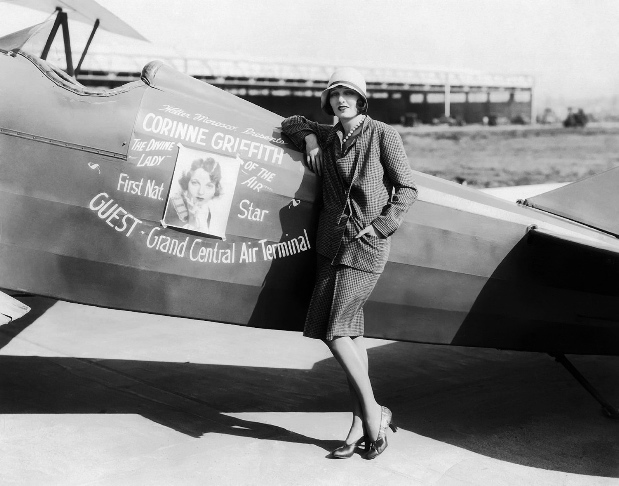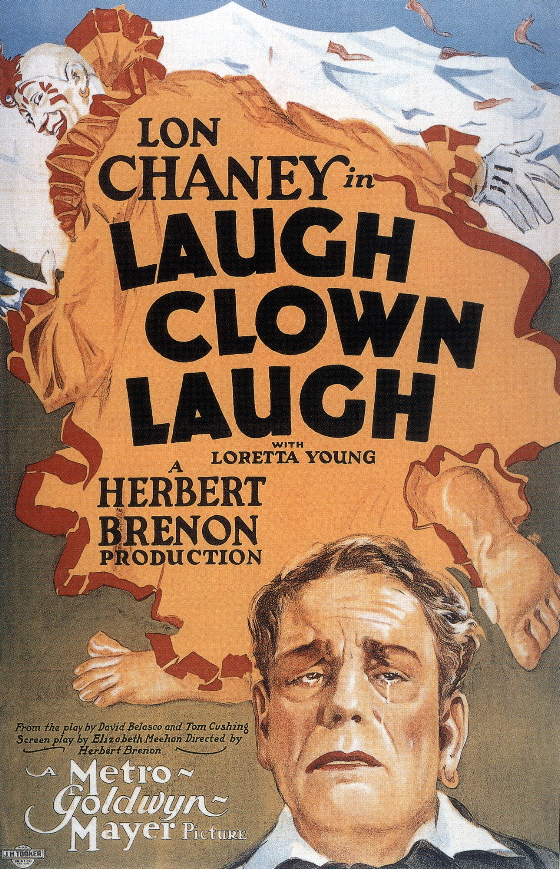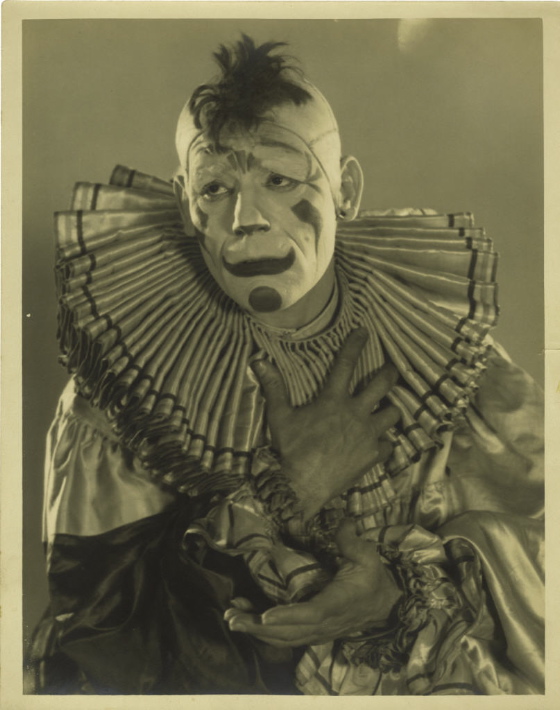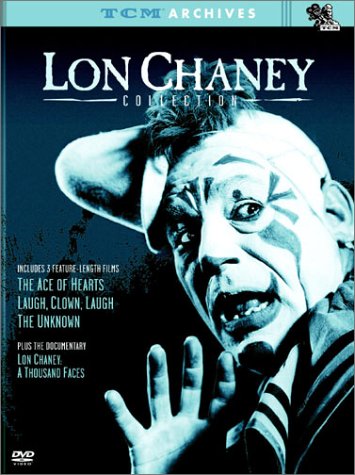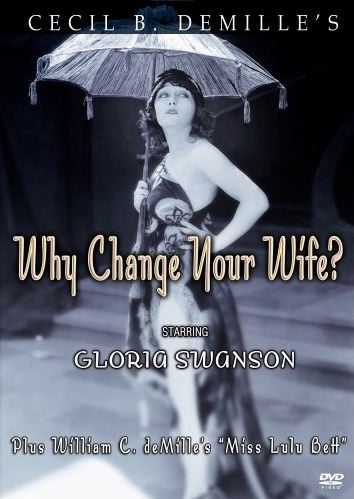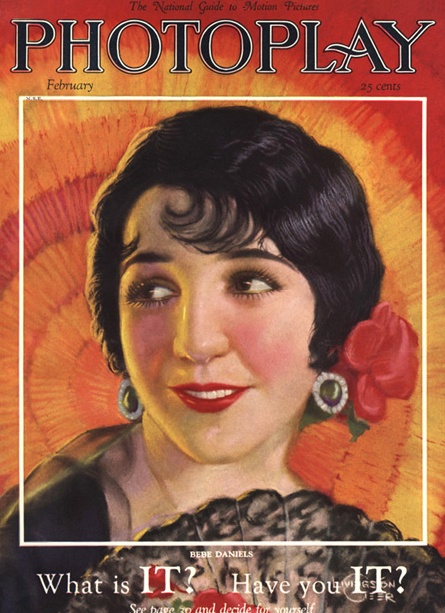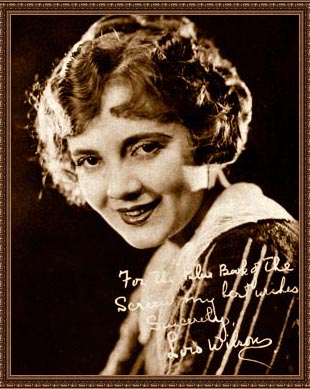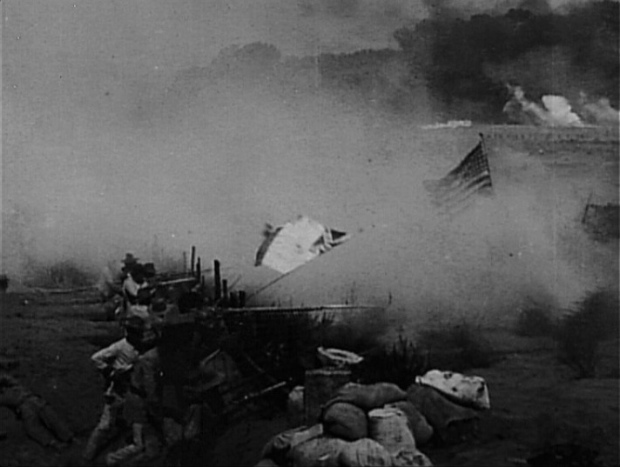
The environmental, or broad cultural racism in the first half of The
Birth Of A Nation finds expression in two ways. The first is the
general depiction of blacks under slavery as well-treated and happy.
It can be argued that some blacks under slavery were well-treated,
insofar as anyone held in involuntary servitude can be said to be
well-treated, and that some blacks under slavery were happy, insofar
as anyone held in involuntary servitude can be said to be happy. But
presenting such blacks as the only representatives of slavery in a film
with the epic scope of The
Birth Of A Nation cannot be seen as merely
an act of dramatic selection. All the characters in the film are
emblematic of broader social realities, and the view of slavery
presented here, as part of the “gracious” Southern social order that
will be swept away by the Civil War, has an ideological dimension —
and
the ideology is based on a lie. Whether or not slavery was a
“necessary evil” or a crime against humanity or on balance a benign
institution, it did not even remotely resemble the portrait of it
offered up in The
Birth Of A Nation.
The second expression of environmental racism is more complex. It lies
in Griffith's decision to have all blacks who are presented as
individuals in the film played by whites in blackface. In this he was
following
conventional theatrical practice. We know, from his testimony in a
censorship hearing for the film, that he considered the issue before
deciding on the blackface solution, but he probably wouldn't have been
terribly self-conscious about it, so common was the practice. But its
very commonness raises interesting issues.
On one level, the blackface caricature of an African-American by a
white actor carries its own critique within it. There is no theatrical
deception involved — the glaringly obvious make-up reveals that the
convention is a convention, and one of the things expressed in the
convention is that whites have appropriated the image of the black,
that whites will control the image of the black. The image must be,
therefore, on the blackened face of it, constructed. The convention
announces that whites feel empowered to construct, to control, the
image of the black, but also admits that the image is inauthentic. It
leaves open the possibility that blacks might construct other images of
themselves, if they had the power to do so — and that they might not
participate willingly in these particular constructions of their
images. There are more questioned raised than answered by the
convention of blackface, at least on an unconscious level.
The pathological, psycho-sexual racism of The
Birth Of A Nation
doesn't emerge until about 16 minutes into the film, with the first
appearance of Austin Stoneman's sluttish maid. Previously, Stoneman
has been
established as a grotesque figure, with a club foot and an ill-fitting
wig. Suspicions about him have been aroused by revealing that he
spends a lot of time in his library, where his family never visits.
He's never shown in his own home — his sons even march off to war from
that home when he is not present. This is Victorian code for the fact
that Stoneman is a creep — at the very least a deeply problematic
figure. Devotion to the
home was an essential element of male rectitude in Victorian fiction.
With the appearance of Stoneman's maid we learn the dark secret he is
hiding — an illicit sexual relationship with his maid, a mulatto
woman. Stoneman is a thinly-veiled stand-in for the great anti-slavery
statesman Thaddeus Stevens. Stevens' radical views on Reconstruction
can be, and have been, criticized as over-zealous and impractical, but
Griffith is suggesting that his polity was the direct result of sexual
perversion, the impulse towards unbridled sexual lust in general and
miscegenation in particular. The mere fact that his slovenly maid is a
mulatto, the product of miscegenation, sets up the association of black
enfranchisement, even black aspirations towards dignity, with an
undiscriminating, animalistic sexuality. The maid is offended when a
visitor to Stevens'
library treats her dismissively, as a mere servant — after he leaves
she flings herself to the floor and writhes in anguish, her shoulders
immodestly bared, her hands playing over her breasts. Her behavior is
not just indecorous — it's positively bestial.
There is no evidence that Thaddeus Stevens ever had an affair with a
mulatto maid, or that he engaged in sexual misconduct of any kind.
What we
have here is pure, and very bizarre, fantasy, which can only be
explained by the pathological association of black enfranchisement and
equality with the destructive unleashing of the libido. A title card
announces that we have witnessed in the scenes described above “the
weakness” — Stoneman's lust for
a black woman — “that blighted a nation”. The entire Civil War and
the complex moral and economic forces that led to it, the entire
abolitionist cause, is reduced to sexual “perversion” in the form of
miscegenation.
Meanwhile, down South, the Civil War has broken out and almost
immediately the Cameron home is threatened by Negroes gone wild.
“Renegade” black soldiers, in Union uniforms, attack the town where the
Camerons live, and the Cameron home itself. Griffith concentrates
dramatically on the threat to the two Cameron sisters, hiding out in
their basement. Any viewer of the time would have recognized the
sexual component of the threat. The girls are clearly in danger of
being raped by the maniacs assaulting their home.
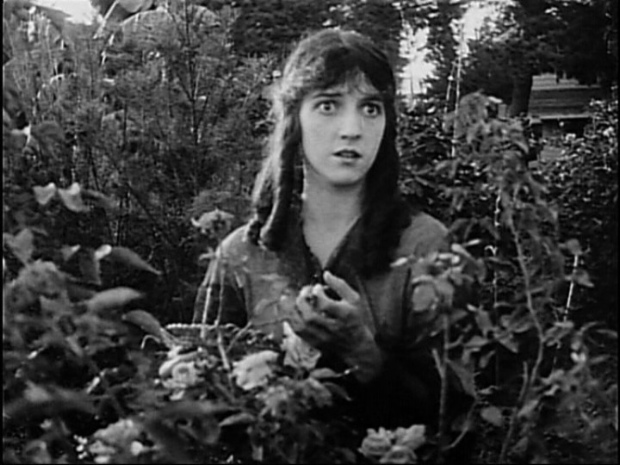
There were, in fact, no bands of renegade black soldiers running wild
in
the South. A title tells us, misleadingly, that the first black troops
were enlisted in South Carolina, which is true — but none of them
ever behaved the way these blacks troops do, which is what the title
implies. A title also tells us that the blacks have been incited to
their behavior by an irresponsible white commander. Griffith often
uses this device in the film to show he's not blaming blacks for their
behavior — only the white trash who spur them on. But this muddles
what's really being said between the lines. The bad whites in these
cases have failed to
exercise proper patrician supervision of and control over their black
charges, they have misdirected and unleashed the animalistic tendencies
of the blacks. The important point being driven home — and it's
driven home throughout the film — is that this potential for
animalistic behavior by blacks is always there and always needs to be
controlled. This is the white man's burden — his first duty in
protecting the home and its women.
A detachment of white Confederate soldiers rescues the Cameron girls
and their home — white actors in blackface help put out the fire in
the house and embrace these soldiers in gratitude. But in the course
of the film, the white deliverers
won't always get there on time . . . indeed, their failure to do so
on one crucial occasion will lead directly to the dramatic climax of
the film.
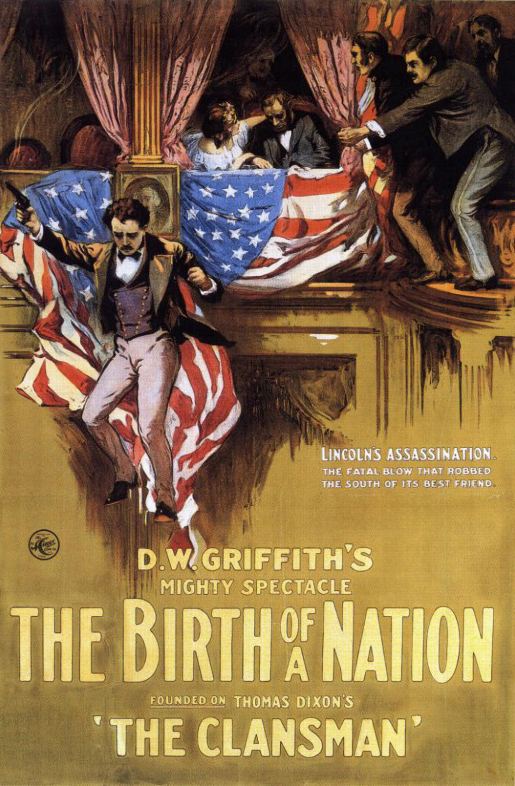
The first half of The
Birth Of A Nation ends with the assassination
of Lincoln, dramatically and quite accurately recreated onscreen. This
assassination has become a tragic, iconic component of America's
national myth, and in the film it is greeted by sorrow on both sides of
the Mason-Dixon line — with one exception. Stoneman's mistress exults
as she strokes Stoneman's arm lasciviously and tells him he's now the
most powerful man in the country. Her villainy and inhumanity could
not be
asserted more forcefully — a more direct connection could not be drawn
between the “history” we're about to watch unfold and the sexual
“perversion” of miscegenation. To this woman, and perhaps to Stoneman,
Lincoln's death only removes the greatest obstacle to the sexual union
of the black and white races.
It's really impossible to fully appreciate Griffith's artistry in this
film without recognizing how skillfully he inflects his national epic
with psycho-sexual themes, appealing to patriotism, nostalgia for a
more gracious age, reverence for the home, in order to set all these
things against the perceived horror of the pollution of the Aryan race
by admixture with inferior blood.
The environmental racism of The
Birth Of A Nation is not egregious by
the standards of its day. It wouldn't even have been egregious by the
standards of 1939, the year of Gone With the Wind, which simply used
cleverer and more sophisticated means to distract us from thinking too
seriously about the horrors and the enduring moral stain of slavery.
And in the first half of The
Birth Of A Nation, the more disturbing
and
pathological racist element is almost overwhelmed by the lyric beauty
of the film in its celebration of family and home and gallantry and
innocent courtly love.
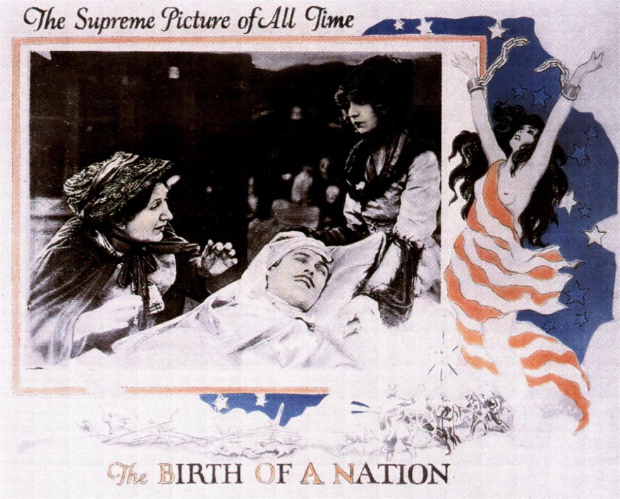
But we will see that the pathological element has been carefully
interwoven into the fabric of the film's first half precisely in order
to set up its emotional ascendancy in the second half — and there is
no question that this strategy was deliberate. The
Birth Of A Nation
prides itself on historical accuracy — with some justification. The
film is historically responsible and convincing in visual terms, and in
many of its recreations of actual events. The only times it departs
conspicuously from historical accuracy, the only times it unashamedly
distorts and
falsifies the historical record, are in those passages where it seeks
to promote its psycho-sexual racist agenda. That agenda will come to
dominate the second half of the film, but it was painstakingly and
strikingly foreshadowed in the first half.
